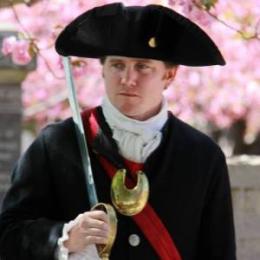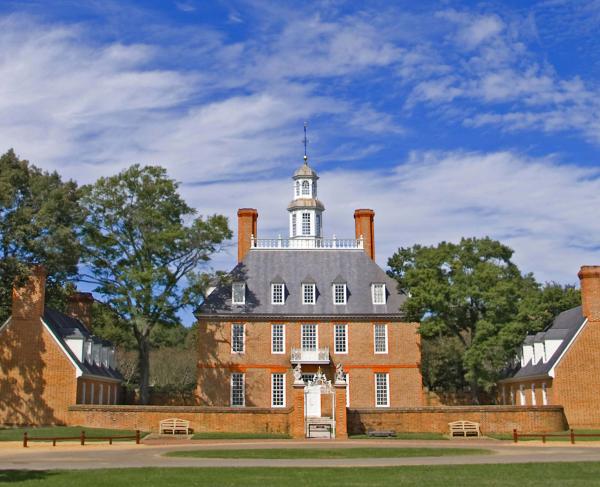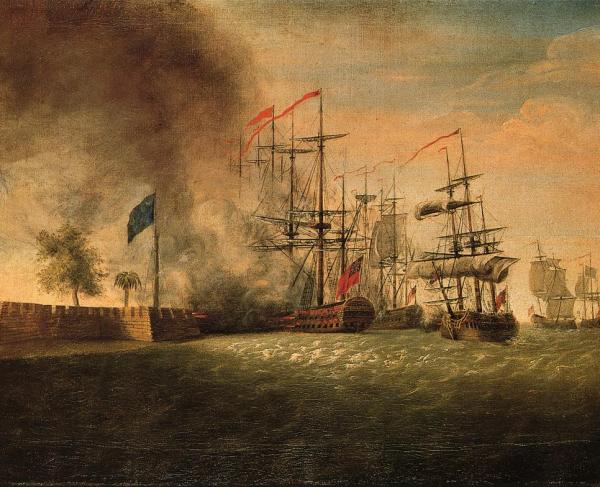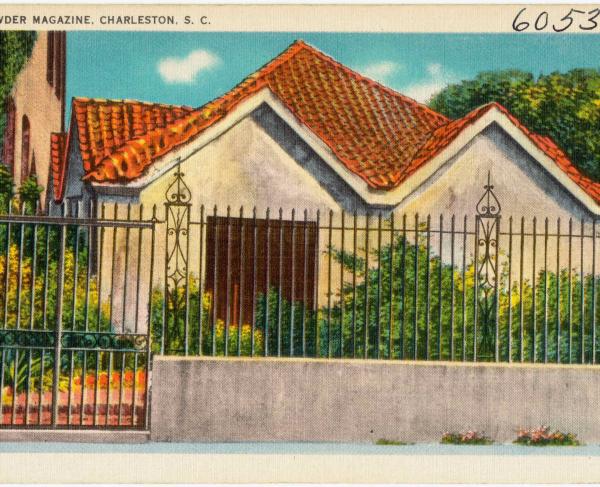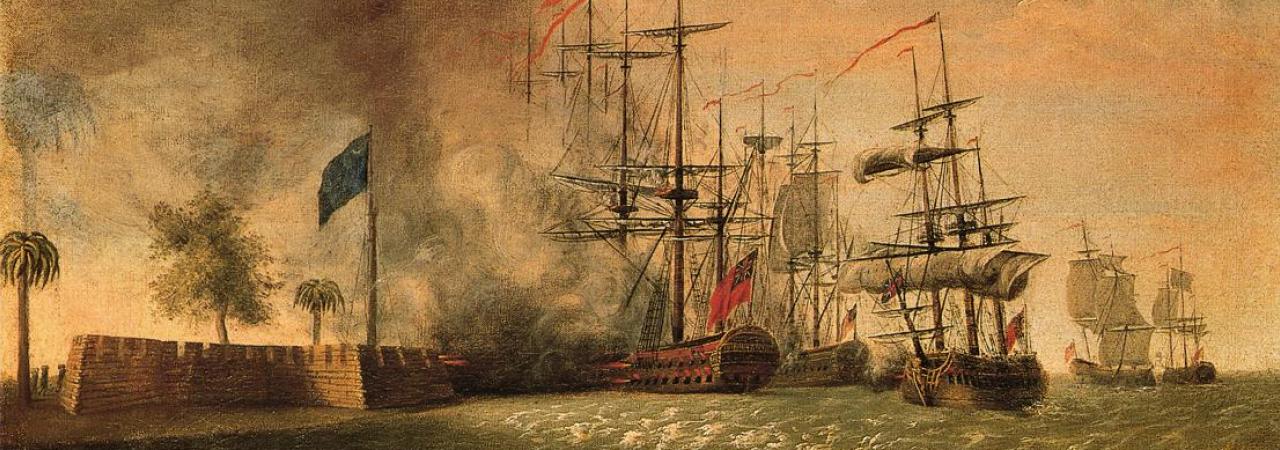
"Sir Peter Parker's Attack Against Fort Moultrie," oil on canvas. Courtesy of Colonial Williamsburg Foundation, Williamsburg, Virginia.
Charleston, South Carolina, was one of the most important cities in the United States during the Revolutionary War. Charleston (at the time called Charles Town or Charlestowne) was one of the wealthiest cities and the fourth largest city in the American colonies, with about 12,000 inhabitants. Much of the wealth in Charleston was generated from the large rice plantations in the Lowcountry located around Charleston. For a colony that benefitted so greatly within the British Empire, it seemed an unlikely place for rebellion.
However, colonists in South Carolina (like their northern brethren) had become accustomed to living largely outside the purview of the British Parliament. When the British Parliament began to tax the colonists directly, many South Carolinians became upset. The citizens of Charleston created a Liberty Tree and protested the Crown’s overreach, even though they had no desire to separate from the British empire. When the Crown cracked down hard on the colonists in Boston following the Boston Tea Party, the people of Charleston recoiled in horror. Seeing another colony have its main port closed by the British showed the power they had to cripple their way of life. Patriotic fervor began to spread in Charleston. The citizens of Charleston held tea parties of their own where tea in Charleston harbor was either secured or destroyed in protest. A provincial government was set up to protect their interests, and South Carolina sent delegates to the First Continental Congress in Philadelphia.
Eventually, tensions in Massachusetts boiled over in April of 1775, and war broke out. In South Carolina, the provincial congress raised regiments of state troops for their defense. The Second Continental Congress established a Continental Army that summer. By September 1775, the Royal Governor of South Carolina was forced to flee from Charleston. Patriot soldiers captured the one main fort in the harbor, Fort Johnson, and raised a new liberty flag over the fort.
In 1776, the Patriot leaders of South Carolina sent soldiers to occupy Sullivan’s Island near the entrance to Charleston Harbor and begin building a palmetto tree fort to defend against a possible British invasion. That spring South Carolina created a new provincial constitution and government, and that summer, joined other patriots in supporting the Declaration of Independence. While South Carolina delegates debated independence in Philadelphia that summer, a large British fleet arrived outside Charleston Harbor.
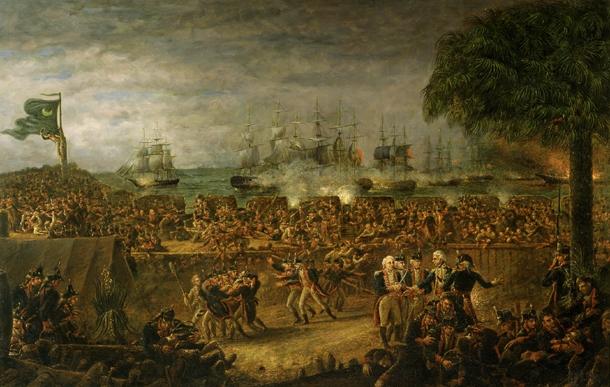
South Carolina was a very divided state at this time. While many in Charleston embraced the new American cause, many remained loyal to King George III. About half of Charleston’s population were slaves. The British hoped to use freedom for the slaves to entice slaves to rise up against their masters. And many American Indian tribes on the frontiers of South Carolina looked to side with the British with hopes of reclaiming their ancestral lands. Hoping they could use these divisions to end the rebellion, the British sailed for Charleston.
The South Carolinians prepared for the city’s defense as the British arrived. Colonel William Moultrie, the 2nd South Carolina Regiment commander, was stationed on Sullivan’s Island. The large Palmetto log fort was only halfway completed in June of 1776. On June 28, the British fleet attacked the unfinished fort while a detachment of British infantry attempted to cross over the Breach Inlet and attack the fort by land. Continental troops posted at the Breach Inlet prevented the infantry from crossing the inlet, and the British Navy continued with its assault on the fort. However, as the British battered the palmetto log walls, the soft spongy wood of the palmetto, with the backing of sand, absorbed the shock of the British cannonballs and did little damage. Meanwhile, Patriot cannons did major damage to the British ships. A few British ships attempted to sail around the flank of the fort but were grounded on a sandbar. The bombardment lasted all day. At one point, the South Carolina flag was knocked down by a British cannonball, and Sgt. William Jasper leaped out of the fort, got the flag, and replaced it up on the fort; the cheers of the men. After fighting all day and sustaining many casualties and damage, the British fleet limped away, defeated. The battle was a major victory for the Patriot cause and saved South Carolina from a British invasion for over two years. The anniversary of the battle, June 28, is often referred to as Carolina Day or Palmetto Day and has been celebrated by Charlestonians from 1777 until today. Thanks to the palmetto tree’s importance in the victory, the tree became the symbol of the state and is today on the state seal and state flag.
The British returned to Charleston in 1779 when General Augustine Prevost led a 2,000-man army out of Savannah, Georgia, on a march up to Charleston. Harassed along the way and bringing with them death and destruction, Prevost’s army reached the city gates in May. Outnumbered and isolated, the civilian leadership contemplated offering the British a declaration of neutrality to take South Carolina out of the war and protect the people's property. The Continental Army leadership was upset, but it did not matter. Prevost rejected it because he did not have the authority for such matters. Also, Continental reinforcements under the command of General Benjamin Lincoln were arriving shortly, so Prevost fell back towards Savannah.
The Continentals followed Prevost and fought with his rearguard left at Stono Ferry on June 20, 1779. The battle was a British victory, but the Americans fought well, and the British continued their retreat. Lincoln and his army followed Prevost to Savannah, and in September, with the assistance of a French fleet and army under the command of Admiral d’Estaing, laid siege to the British in Savannah. Running low on supplies and time, Lincoln and d’Estaing decided to assault the British position to break the siege. They engaged in a piecemeal frontal assault against the entrenched British. French and American troops suffered major casualties as they were cut down before the British ramparts. Among the dead were Sgt. William Jasper and Casimir Pulaski. Defeated, the French left for the Caribbean, and Lincoln moved his army back to Charleston.
With news of Lincoln’s defeat and with the stalemate in the northern theatre against General George Washington, British General Henry Clinton moved almost half of his army from New York down to Savannah to begin an operation against the city of Charleston. Having learned from the mistakes of the 1776 invasion, Clinton decided to assault the city from the land. In February 1780, Clinton’s army landed south of the city and marched overland. Lincoln continued to be reinforced by soldiers from Washington’s army, but he was still outnumbered almost two to one. Deciding that an attempt should be made to hold the city, Lincoln began to build up the defenses on Charleston's neck for a defense.
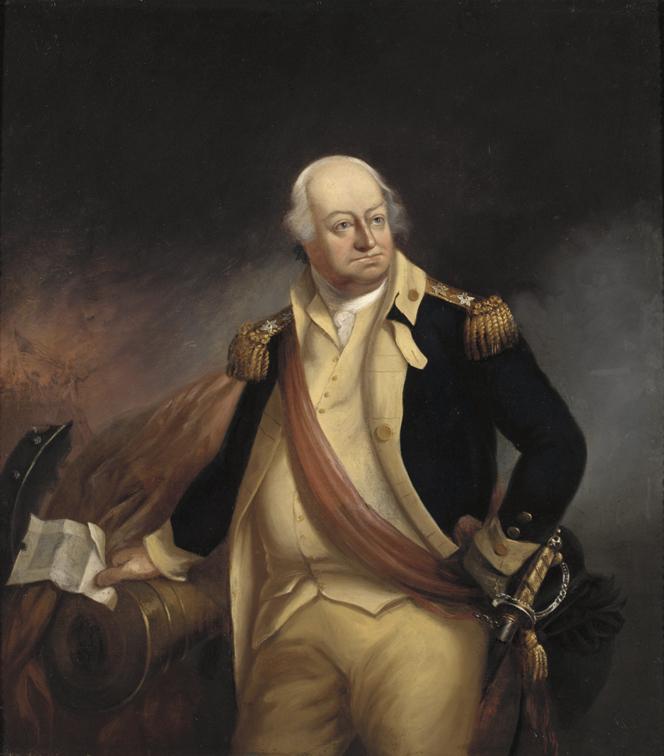
By April of 1780, Clinton had advanced onto the neck and began to build siege lines to trap the American army in Charleston. For six weeks, the British constantly bombarded the defenders and civilians in Charleston. Eventually, British troops encircled the Americans in the city, and the British fleet sailed into the harbor. With no option of escape and with a lack of support from the civilians and militia, Lincoln decided to surrender his garrison on May 12, 1780. With more than 5,000 troops surrendered, it was the biggest defeat of the Revolutionary War for the Americans. British troops marched into the city and occupied it for two and a half years.
While the militia was given paroles, the Continental soldiers were made prisoners of war. The officers were separated from their men, and most common soldiers were consigned to the bitter fate of being imprisoned on prison ships in Charleston harbor. While the British tried to get as many prisoners as possible to desert to the British army, nearly 800 men would die of disease and malnutrition on the prison ships rather than join the British military.
From May of 1780 to December of 1782, Charleston served as the British headquarters in the Carolinas. From here, Cornwallis would leave to engage in his attempt to quell the rebellion in the South Carolina backcountry. He would be victorious at the Battle of Camden in August of 1780, but from there would meet failure in an attempt to chase down and destroy General Nathanael Greene’s army. Cornwallis ultimately ended up at Yorktown in October of 1781, where he was forced to surrender his army. His second in command was forced to surrender his sword to Benjamin Lincoln, who had surrendered Charleston.
Meanwhile, Nathanael Greene and the South Carolina militia continued to push the British closer and closer to Charleston. In one of the last major battles in South Carolina on September 8, 1781, Greene’s army fought a bloody battle at Eutaw Springs, about 60 miles from Charleston. The British continued to fall back towards Charleston.
With the war's outcome all but decided after Yorktown, the British continued to occupy Charleston for the next year. Greene and his army were camped nearby as peace commissioners met in France to officially end the war. Combat still occasionally occurred, including the sad and unnecessary engagement at Tar Bluff, south of Charleston, where young Patriot Col. John Laurens was killed leading a raiding party against some British soldiers.
In November of 1782, the final battle with the British soldiers occurred near Charleston on James Island at the Battle of Dills of Bluff, a small raid that resulted in some of the last deaths of the war. Finally, on December 14, 1782, the British evacuated Charleston, along with thousands of loyalists and slaves. Nathanael Greene and his veteran army marched into Charleston to the cheers and salvos of the Patriots in Charleston.
While most remembered for its close associations with the history of the American Civil War, the city of Charleston has a deep and important history during the Revolutionary War. The city continues to commemorate its Revolutionary War history with annual celebrations of the American victory at Sullivan’s Island, as well as with statues, plaques, and memorials to the heroes of Charleston’s Revolutionary War history.
Related Battles
37
220
5,506
258
10
5
